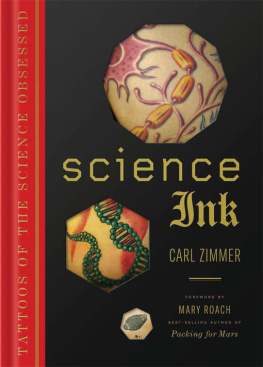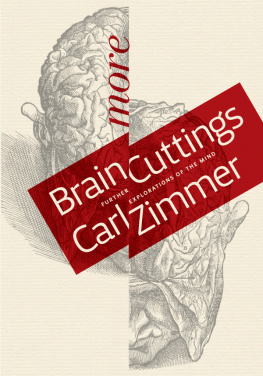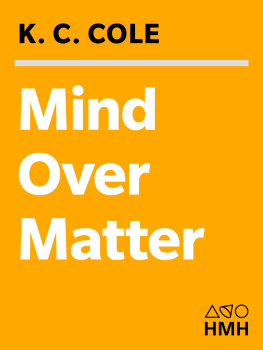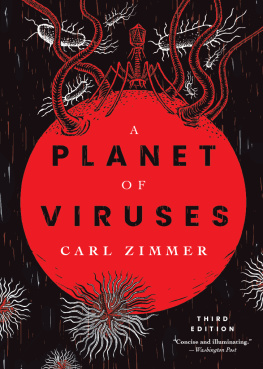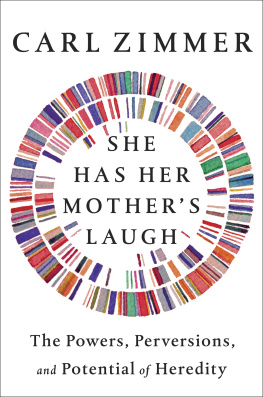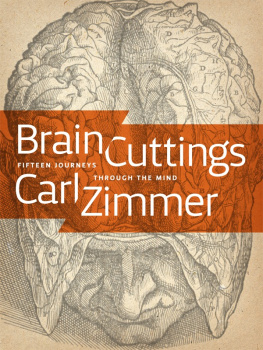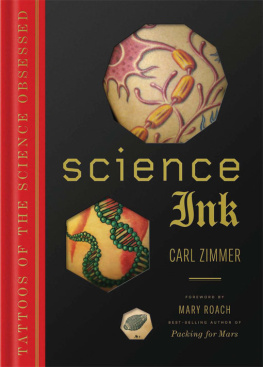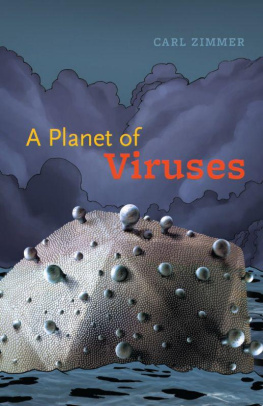

To everyone marked by science, both within and without

STERLING and the distinctive Sterling logo are registered trademarks of Sterling Publishing Co., Inc.
2011 by Carl Zimmer and Scott & Nix, Inc.
Foreword 2011 by Mary Roach
All rights reserved. No part of this publication may be reproduced, stored in a retrieval system,
or transmitted, in any form or by any means, electronic, mechanical, photocopying, recording, or otherwise,
without prior written permission from the publisher.
ISBN 978-1-4027-8360-9 (hardcover)
ISBN 978-1-4027-8935-1 (ebook)
Prepared and produced by
Scott & Nix, Inc.
150 West 28th Street, Ste. 1103
New York, NY 10001
www.scottandnix.com
A portion of the proceeds from Science Ink will be donated to
DonorsChoose to support science classroom projects.
To learn more, visit www.donorschoose.org.
For information about custom editions, special sales,
and premium and corporate purchases, please contact Sterling Special Sales
at 800-805-5489 or specialsales@sterlingpublishing.com.
2 4 6 8 10 9 7 5 3 1
www.sterlingpublishing.com
The cover was designed by Charles Nix and
Alexandra Zsigmond.
The book was designed by Charles Nix.
Contents
U NTIL I SAT down with this book, my favorite tattoo belonged to a type designer named Jim Parkinson. Born to Letter, it says, above a menacing black skull smoking a joint. I liked the surprise of it, the sly humor. You dont expect large, showy tattoos on lettering professionals. And you dont expect them on scientists. Or I didnt. But this is silly. Of course scientists have tattoos. Scientists, as much as bikers or gang members, have the requisite motivator for a trip to the tattoo parlor: a passion that defines them. If you like the Mets, you buy a baseball cap. If you love the Metsor chloroplasts or Billy Bob Thorntonyou get a tattoo. The word love appears many times in this book, applied variously to pure mathematics, experimental physics, and marine fossils. That tattoo artists today receive more requests for DNA helices than they do for Mom (and I am guessing here) can only be good.
Tattoos mark their wearers as members of a tribe. In the language and symbols of the tribe, the tattoo communicates that which is meaningful: I prefer Harleys; I have killed three men; I know a lot about fonts. Scientists have the best symbols of all. I cant parse the exact statement Cassie Backus is making with the symbols for a on Brittany Hughess back (p. 35). The symbols of science set the tattoo-wearer apart from the rest of us at the same time they draw us in with their mystery and beauty.
I have never seen Carl Zimmer without his clothes, but I am told he has no tattoos. As a science writer, he belongs to no tribe. He is the interloper, the interpreter, a dozen United Nation headsets going at once. To write this book, Zimmer had to learn all the languages, decode all the symbols. This is no coffee-table tattoo bookto absorb it is to acquire instant science literacy. Zimmer explains the tattoos in brief, clear, eloquent essays. You try doing this with the Fourier Transform, the Dirac Equation, and the Lazarus Taxon. (Does everything in science have to sound like a Robert Ludlum novel?)
Many years ago Carl Zimmer was my editor at Discover magazine. Each assignment meant acquainting myself with a subject I knew nothing about: bird migration, say, or the biomechanics of locomotion. In each one, there came a point where I had got in over my head. Mary, can you try this paragraph again, Carl would write in the margin. It doesnt make sense. Then hed suggest a 400-page book by a prominent expert in the field. I never read the books, because it was easier to beg Carl to write the passage himself. It was always the smartest, smoothest part of the piece. If I could choose a tattoo for Carl Zimmer, it would be something random, a parsnip or a lunchbox or Maria Conchita Alonsos bosom. Just so I could hear him say, Mary, this doesnt make sense one more time.
P.S. Here is the tattoo I would get, if I ever got one.

Fig.1. The underpant worn by the rat.
This drawing comes from a European urology paper entitled Effects of Different Types of Textiles on Sexual Activity, by the late Ahmed Shafik, an Egyptian researcher. I stumbled onto it when I was working on my book Bonk: The Curious Coupling of Scienceand Sex. I immediately, giddily fired off an email to Cairo, knowing that I had to meet this man and include him in the book. No image better represents what is for me the irresistible lure of what I do for a living.
Mary Roach, 2011
S ANDEEP ROBERT DATTA puts up an intimidating front. On his website at Harvard Medical School, where he is an assistant professor, he poses in front of a wall of flasks and scales, his arms folded and his mouth drawn into a scowl. The central hypothesis of our laboratory, his site informs us, is that the neural circuits that trigger fixed action pattern behaviors in response to ethologically-relevant odors (such as those from food, predators and mates) are both anatomically and genetically stereotyped; we plan to leverage the invariance of this specific type of neural circuit to understand how odor inputs are coupled to behavioral output centers in higher brain, which in turn will reveal principles used by genes to specify behaviors.
I happen to be friends with Professor Datta, and I can vouch that there is a less daunting side to this neurobiologist. For starters, he prefers to be called Bob. Bob and I have stood for hours together at a club in Hoboken, as the band Yo La Tengo has killed off some of our ear cells with their power chords. He and his wife Eliza have twin boys, Jasper and Theo, whom they take to Chuck E. Cheese to celebrate birthdays. In the summer of 2007, the Datta clan came to a pool party for the birthday of my nephew Blake, and the esteemed neurobiologist splashed around in the water for hours with his boys. It was then that I noticed something on Bobs arm. He had a tattoo.
The tattoo, I could see, was that most famous molecule, the twisting ladder of DNA. There was a logic to the choice, since Bob studies the DNA of fruit flies, observing how mutations to certain genes alter how their nerves develop and how they behave. When I complimented Bob on his ink, he let me know that the DNA in the picture was not just any DNA. It had a message.
DNA stores information for making proteins in its rung-like units called bases. There are four different bases: adenine (A), cytosine (C), guanine (G), and thymine (T). It takes three consecutive bases to encode a single amino acid, the building block of protein. There are twenty different kinds of amino acids in humans, each abbreviated with a letter. The letter E, for example, stands for glutamate.
Bob explained to me that his tattoo spelled out the initials of his wife, Eliza Emond Edelsberg. He took advantage of the fact that E is the abbreviation for one of the building blocks of proteins, called glutamate. (Why not G, you may ask? Because another building block, glycine, got first dibs.)

Next page
